Parkinn is the one stop solution for all your hassle-free parking needs in different cities. Moreover, it searches the best parking spot with availability, and enables people to rent out their space on the application as a parking location generating additional revenue.
The application was specifically designed for South-Asian countries keeping in mind the levels of increased population, road connectivity, seasonal effects and festive conditions.
Parkinn
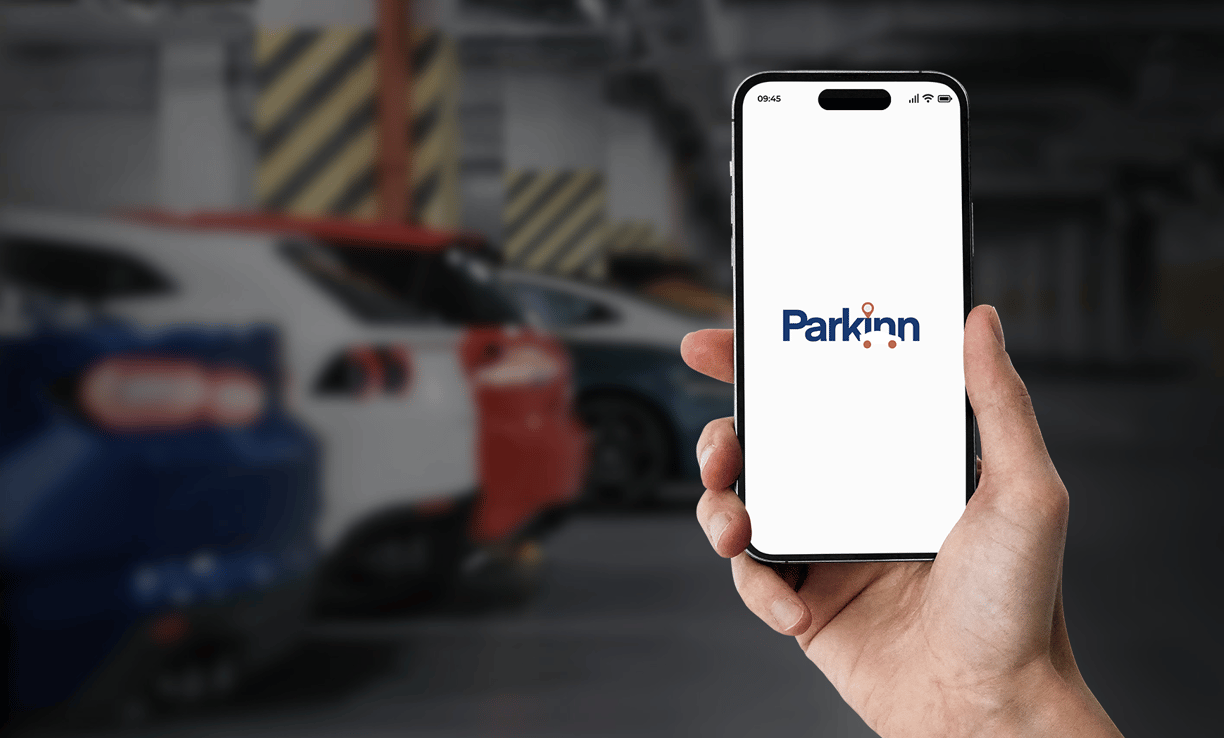

Our objectives were to lower management costs and alleviate congestion by optimizing parking schedules. This would enhance mobility and streamline overall operations, leading to a more efficient and effective system within the city.
Our project aim


Pre-book spots






Real-time data
Merchant feature
Festive options
After clarifying our project goals and priorities, we conducted a comprehensive analysis of existing competitors in the market. This involved mapping competitors based on key parameters such as market leaders, niche players, emerging contenders, and diverse offerings.
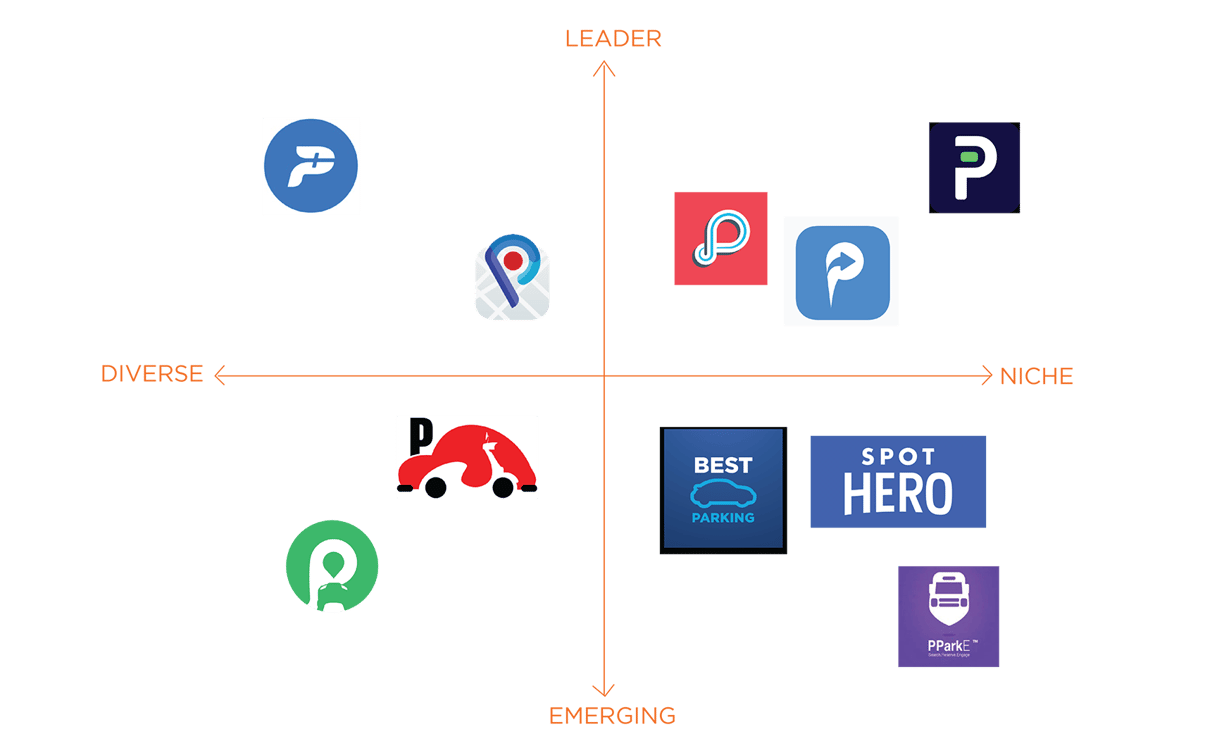

By categorizing competitors in this manner, we gained valuable insights into the competitive landscape, helping us identify opportunities and threats. This strategic assessment informed our approach, ensuring our project could effectively differentiate itself and address gaps in the market
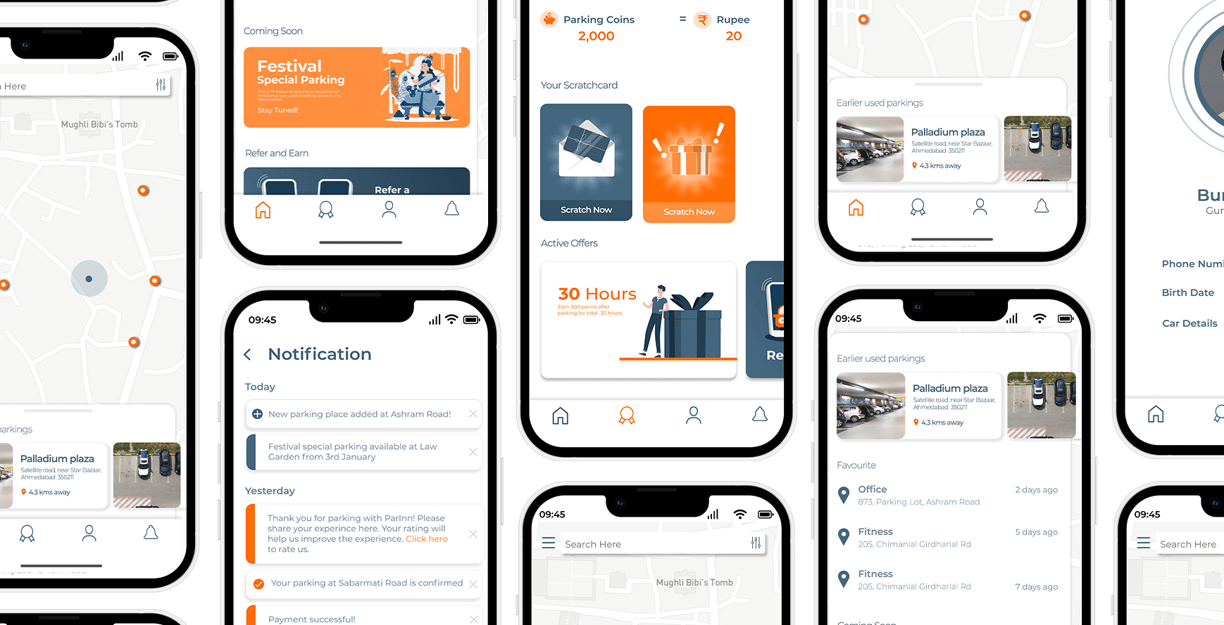

Domestic market analysis & secondary data
Understanding the domestic market, where the application would be primarily used, was essential to our strategy. Additionally, conducting a thorough competitive analysis provided us with a comprehensive view of the market landscape.
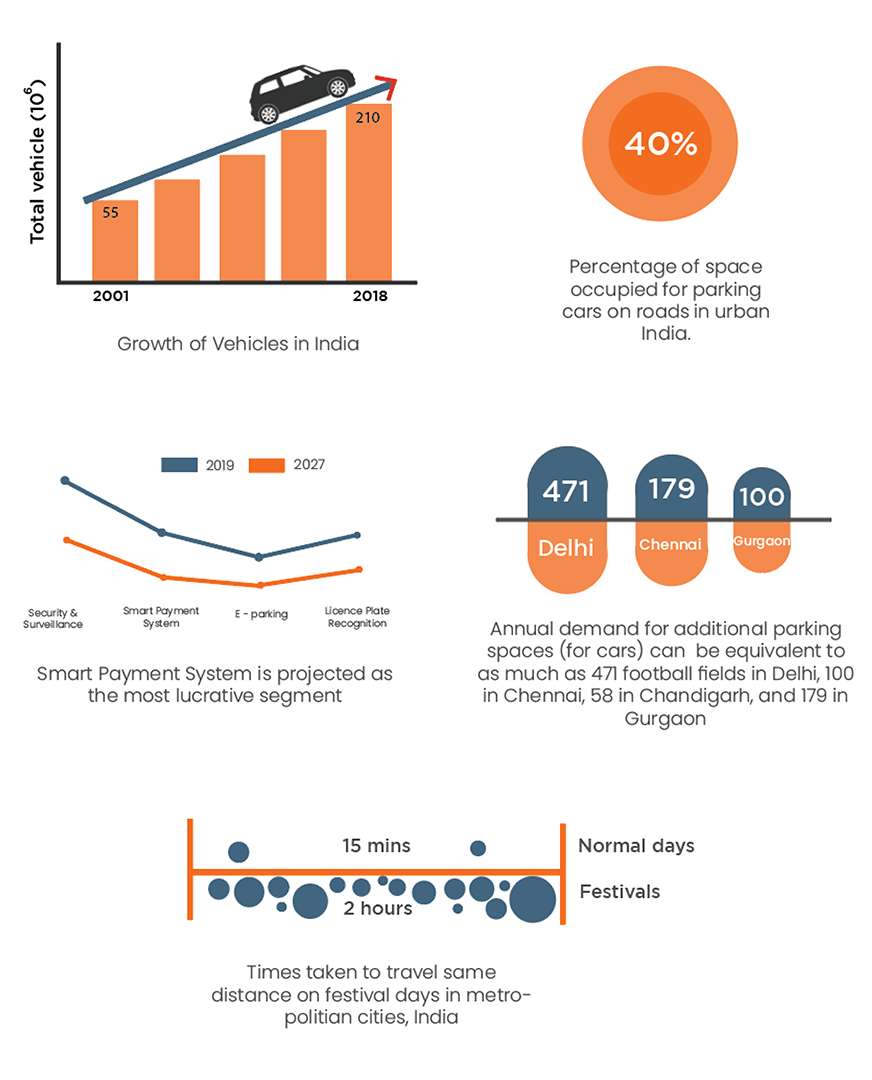

This analysis helped us identify key players, understand their strengths and weaknesses, and recognize market trends.
By gaining insights, we were equipped to position our application effectively, tailoring features to meet user needs, and develop a robust strategy to navigate the competitive environment successfully.
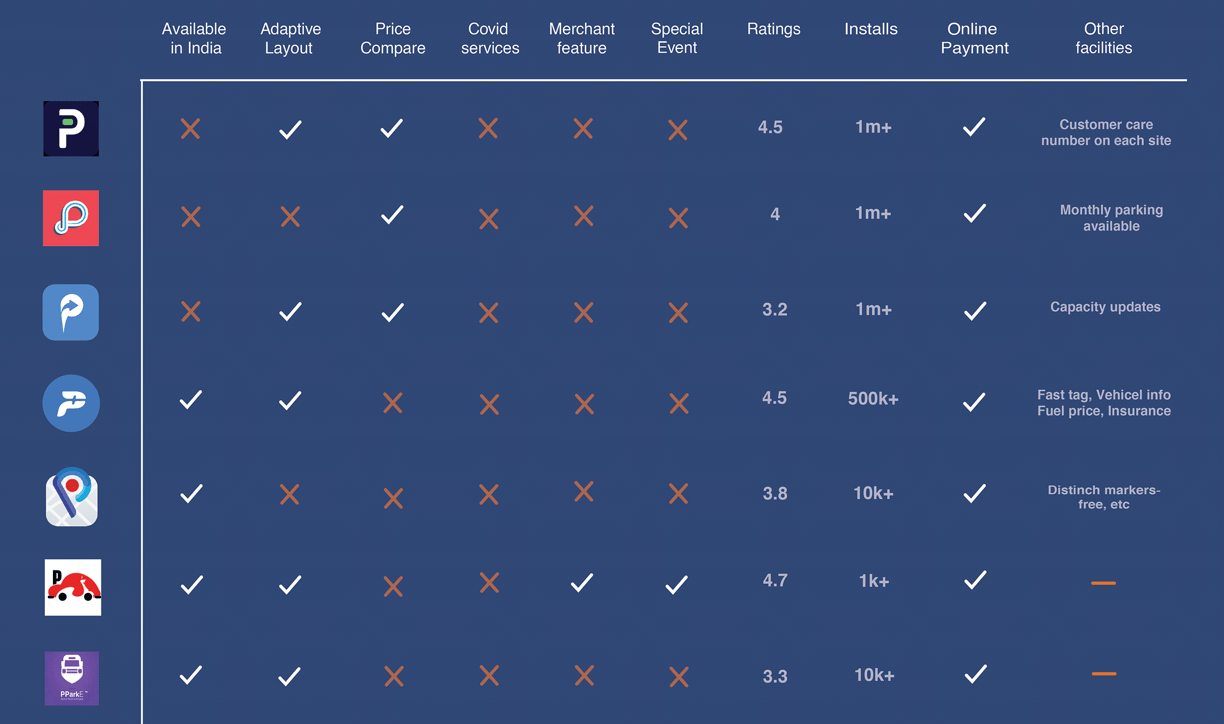

Understanding context, users & pain points
User inteviews were essential to the design process as it validates the secordancy data findings and add an emphathtetic layer to the solution which understands the users in depth.
Some of the questions we included in the survey were -
How easily do you find parking spaces in public spaces?
How often do you park on street?
At what time do you face major parking related issues?
Have you used a parking app before?
If yes, which app you use and what functions you like in that app?
Do you think booking in advance will solve some parking related issues?
What features should a parking app include according to you?
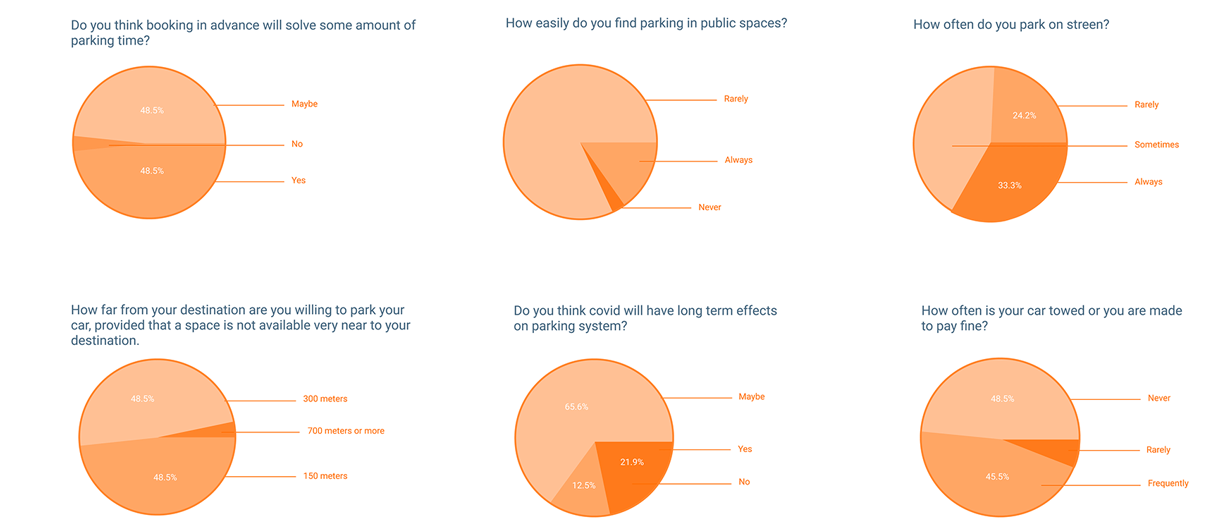





User interviews
Interviews
+
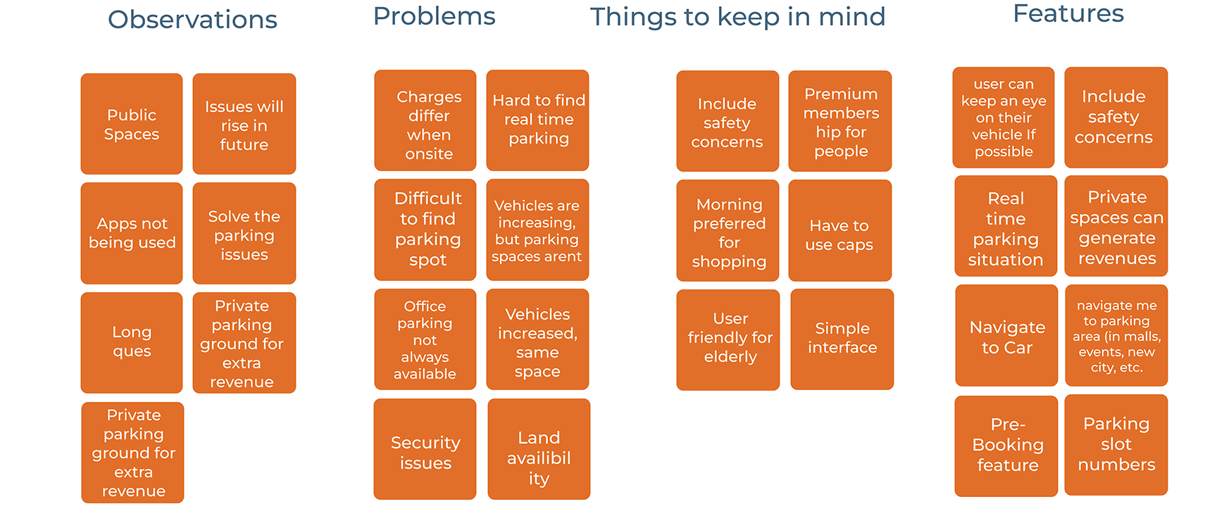

This human-centered approach ensured our design addressed real-world challenges and resonated with target audience on a meaningful level, aiming to achieve our defined goals at the start of the project.
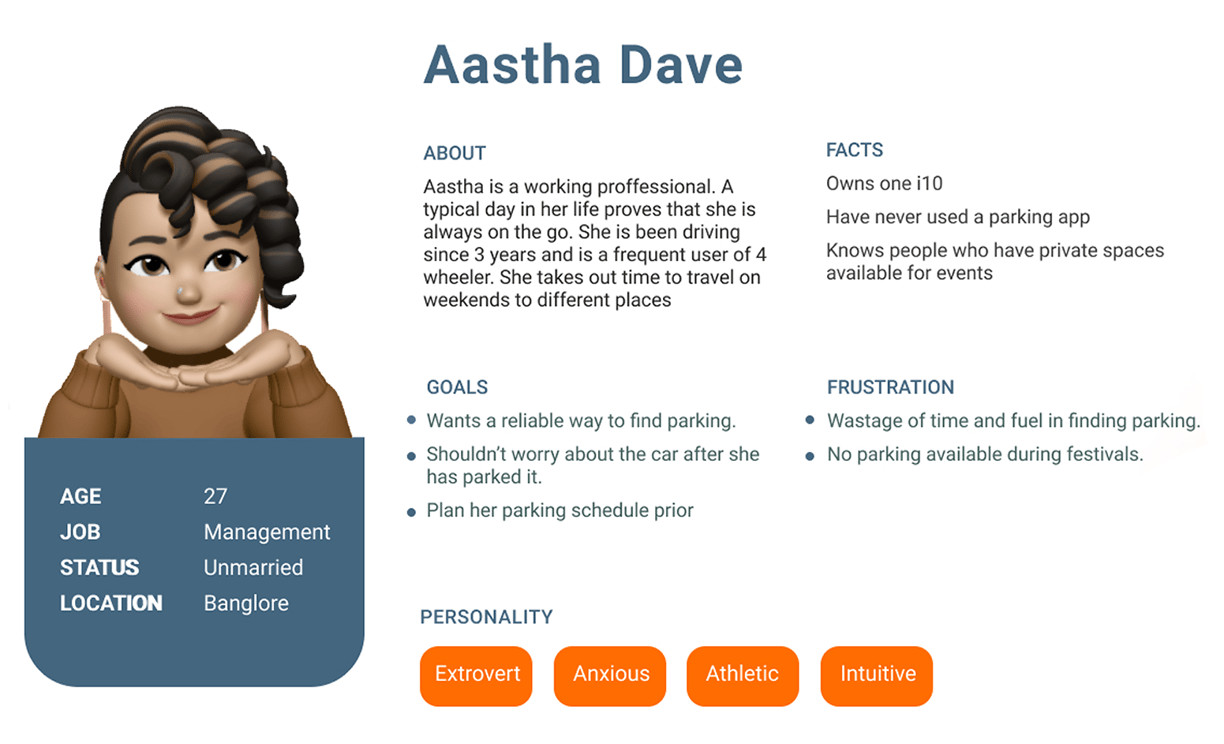

User flow & personas
The personas we developed spanned from young adults to working professionals, encompassing a wide range of vehicle owners who regularly grapple with parking challenges in their daily lives.
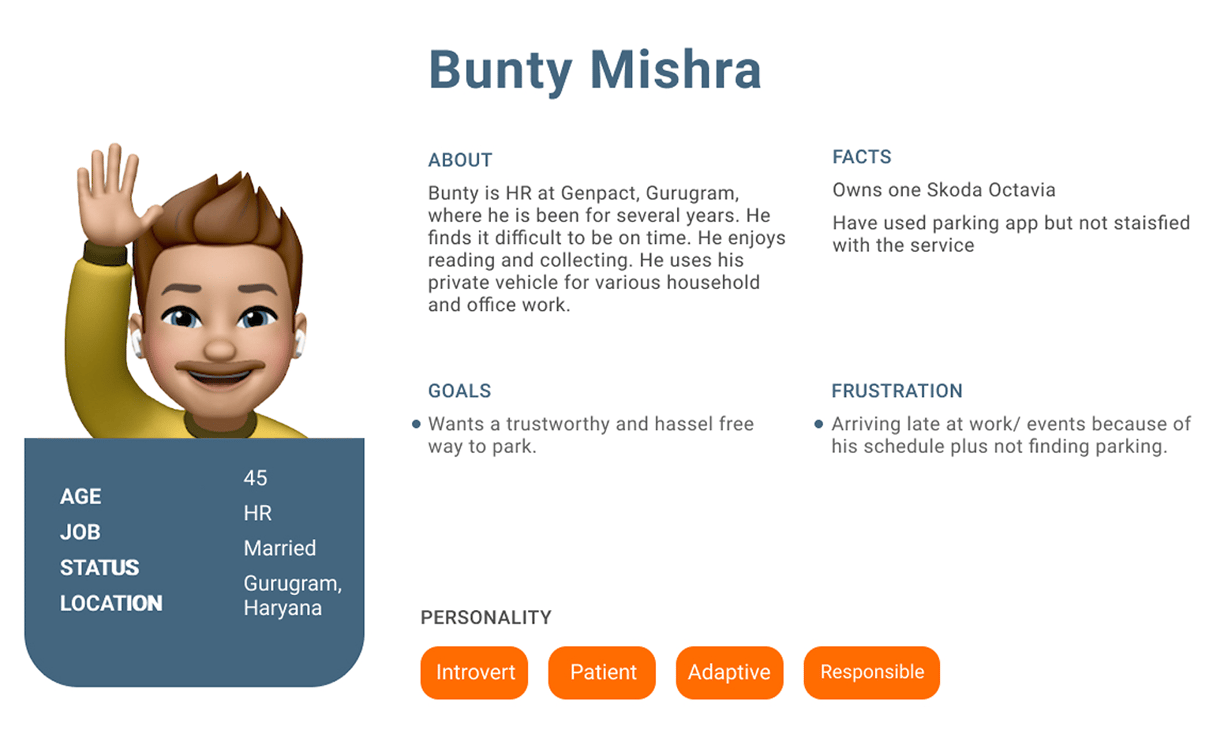

This diverse representation allowed us to capture varied needs and experiences of individuals who interact with parking issues on a day-to-day basis, ensuring our solution resonated with a broad spectrum of users.
The persona category ranged from young adults to working professionals covering vehicle owners interacting with parking issues of daily basis.



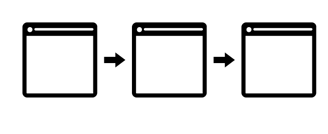
Personas
User flows
+
User flow diagrams were like a roadmap, helping us understand how users navigate through our system and where they might encounter hiccups.

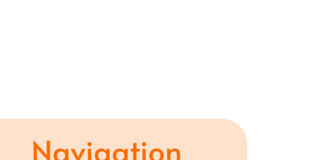
This visual aid gave us clarity on how to redesign certain parts to make interactions smoother, ensuring everyone has a hassle-free experience.


Low-fidelity wireframing
After conducting our research and organising the insights into actionable points, we began the design process by creating low-fidelity wireframes.
This step-by-step approach allowed us to iterate and refine the design, creating a directive, effortless and intuitive user experience.
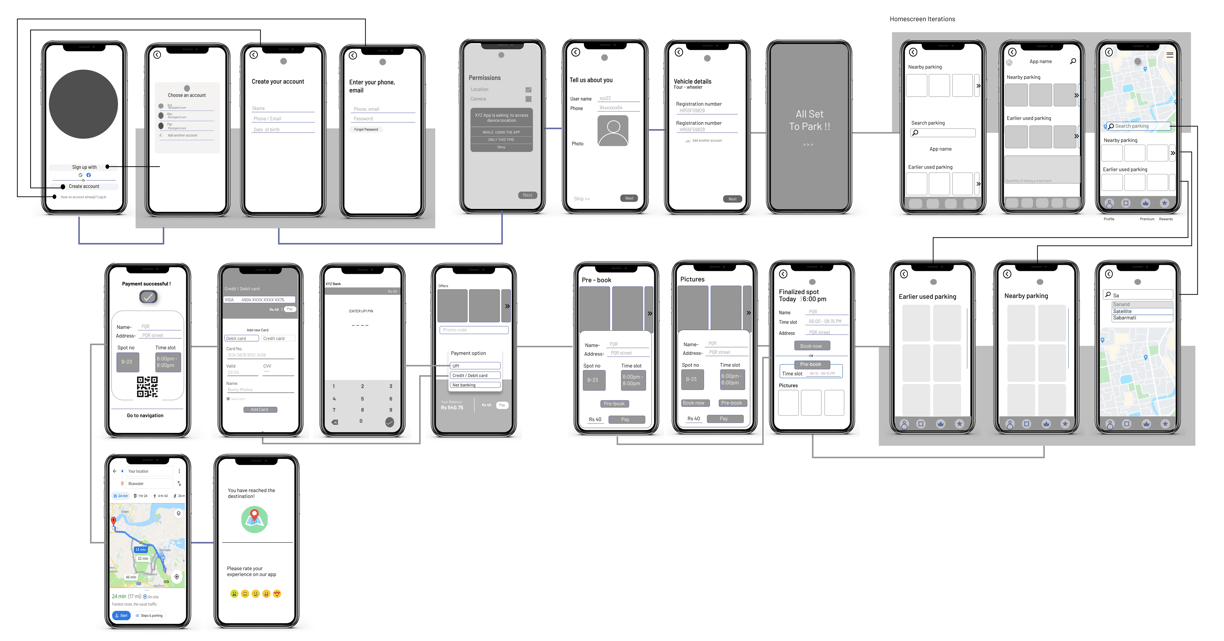

These initial sketches helped us build a solid foundation for the application. By focusing on structure first, we ensured that the design was user-centered and addressed the key needs identified in our research.
Style guide
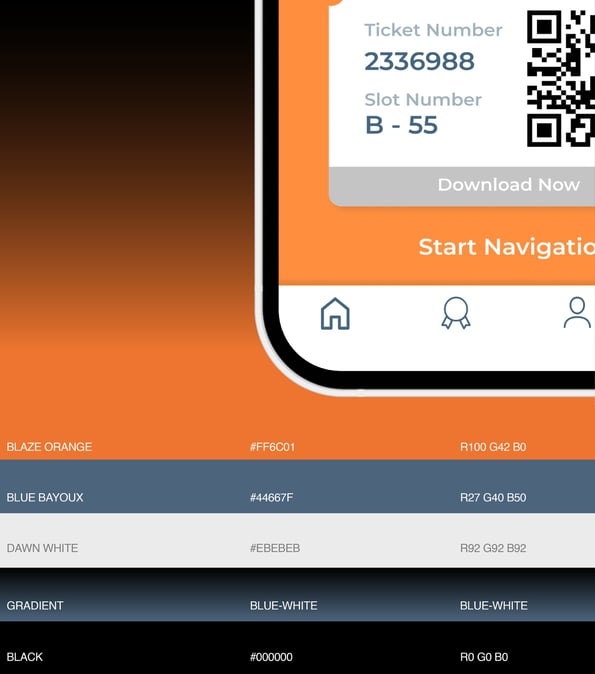

Specifying fonts, text sizes, font weights, icons, buttons and more made the application to fit properly in a structured way, navigating rightly for the user.
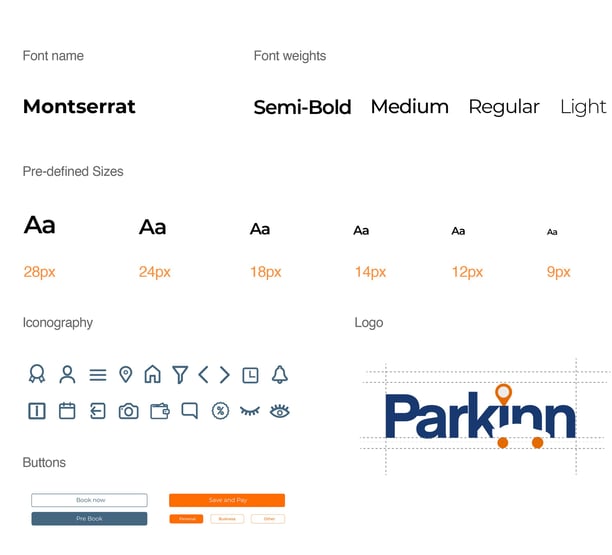

User interface
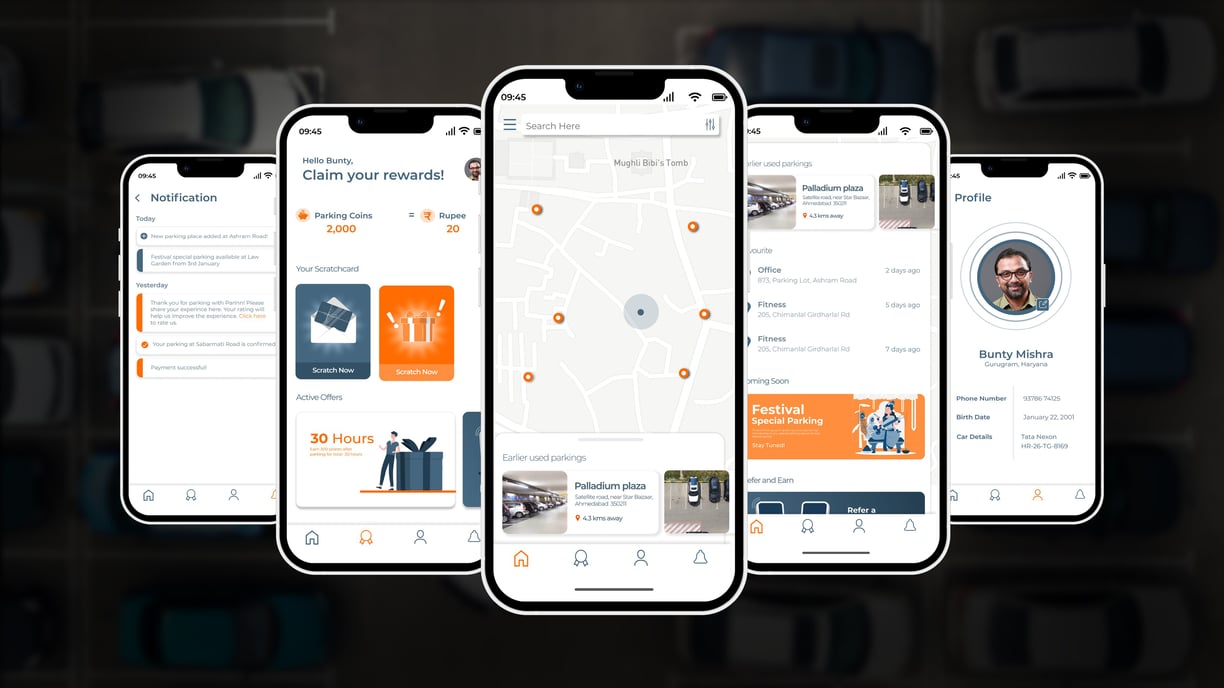

Home screen visualizes many useful features like used parkings, history, nearby spots, account rewards, favorite parking spots, upcoming festival parking arrangements and many more.
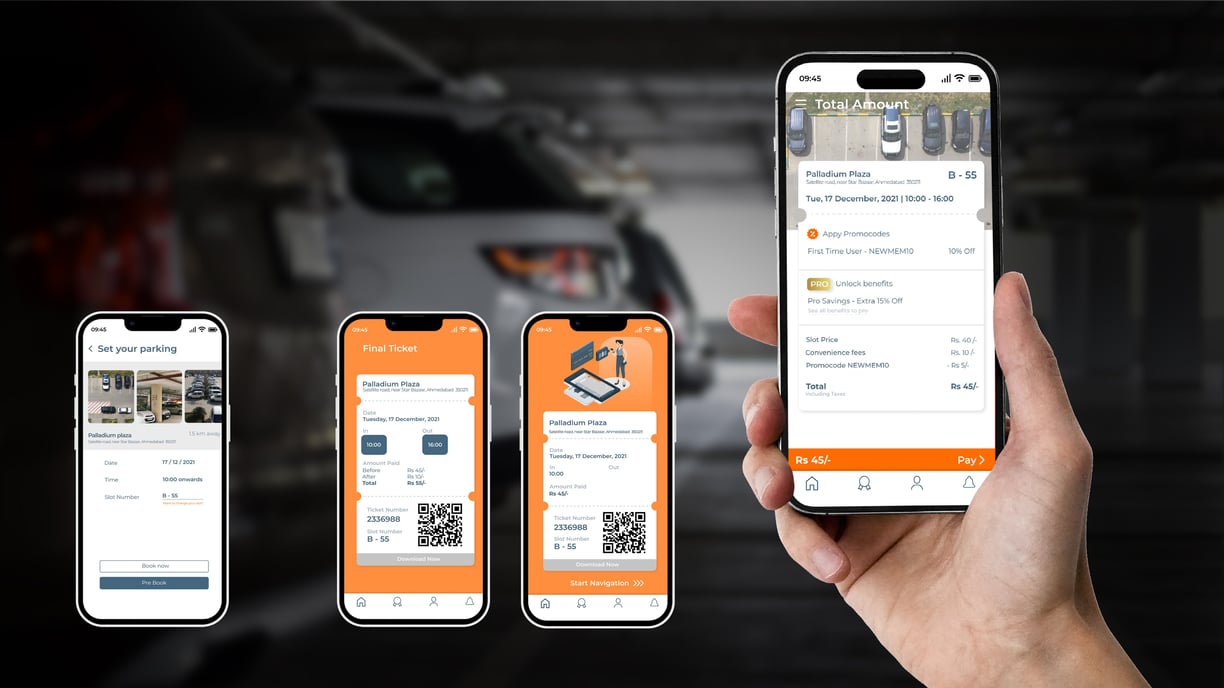

Once the spot is finalized, add all the required details (date, time, slot number) and proceed with payment options. All of the details like parking time, location, car information gets registered automatically once you confirm your ticket and pay.
This feature lets you pre-book your parking as well! You will receive a ticket confirmation by which you can just scan into the scanner at the parking facility and park your car hassle-free.
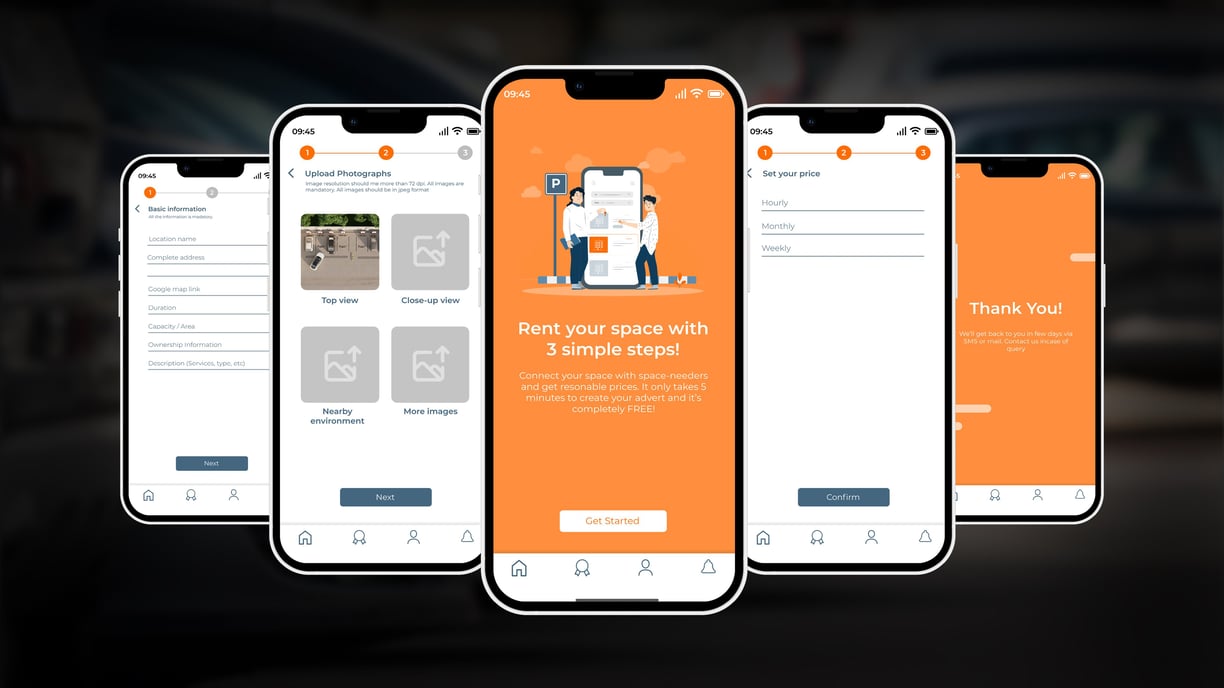

Merchant setup lets you rent your space as a parking sport for others and lets you earn extra revenue on the side. The setup is easy with adding details, location, photographs of the space.
Prototyping video
User testing & further iterations
It was significant to user test our design in actual user environments to understand how well the design interacted in critical situations of finding parking spots, in traffic, or while navigating towards the destination.
Two critical aspects of user scenarios were in outside parking lots with direct sunlight, and inside car in basement parking lots.
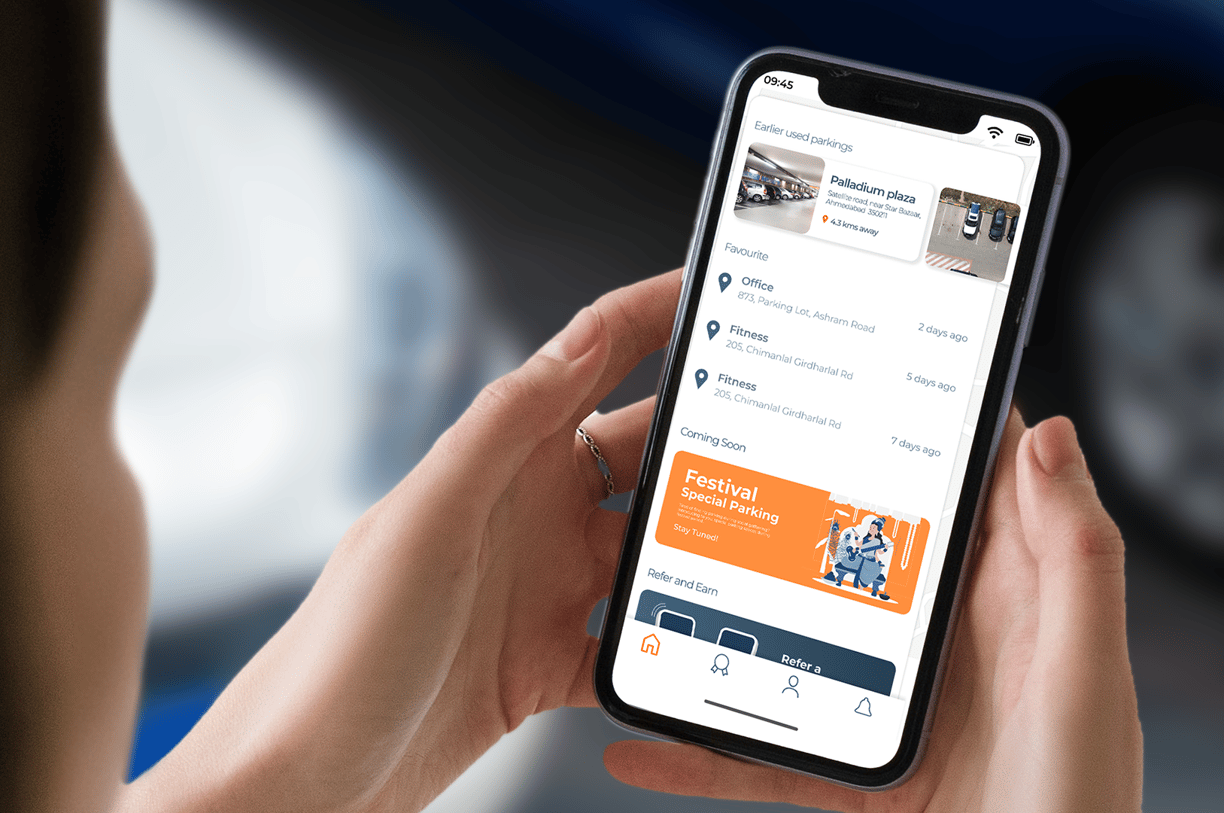

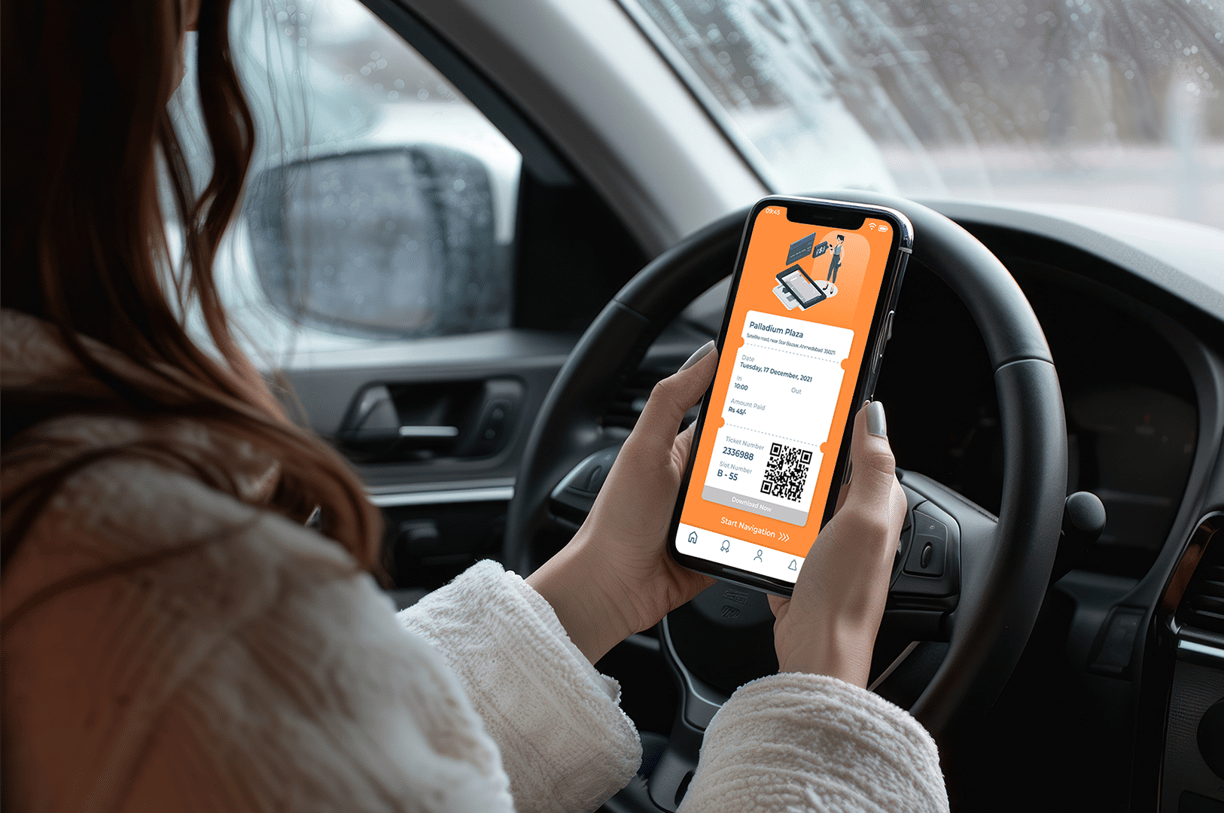

This way we user tested both scenarios to inspects color coordination, font legibility, navigation screens, easy access to frequently used parking spots, different locations and more.
Further actions include iterating designs based on user testing insights and improving on existing layouts.
Team: Labdhi Mehta, Sanskar Singh Naruka, and Tejas Gaikwad.

